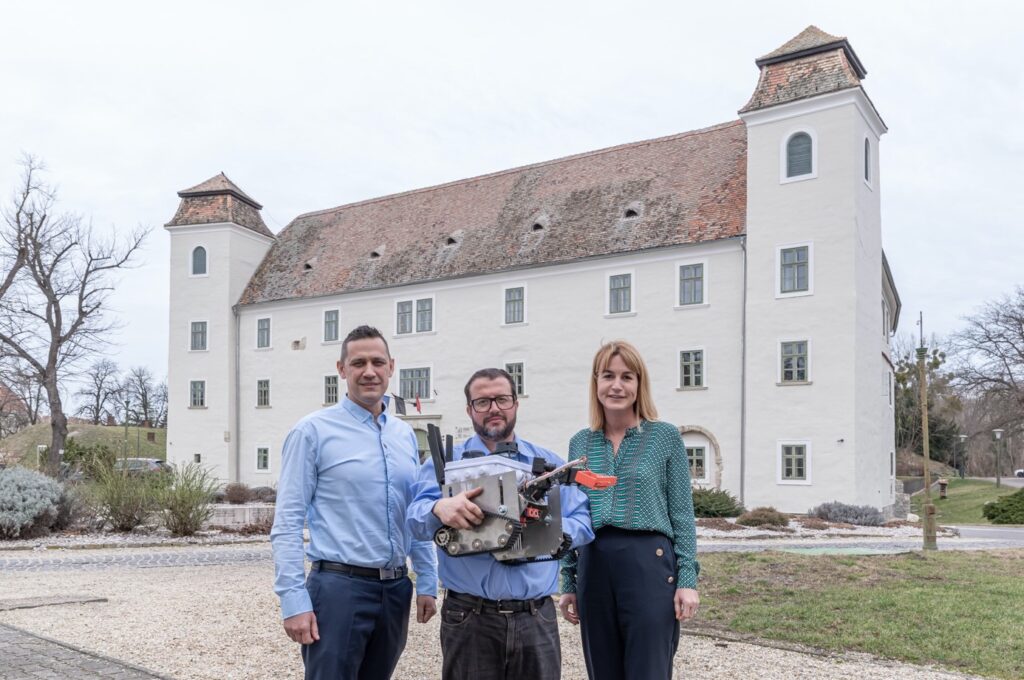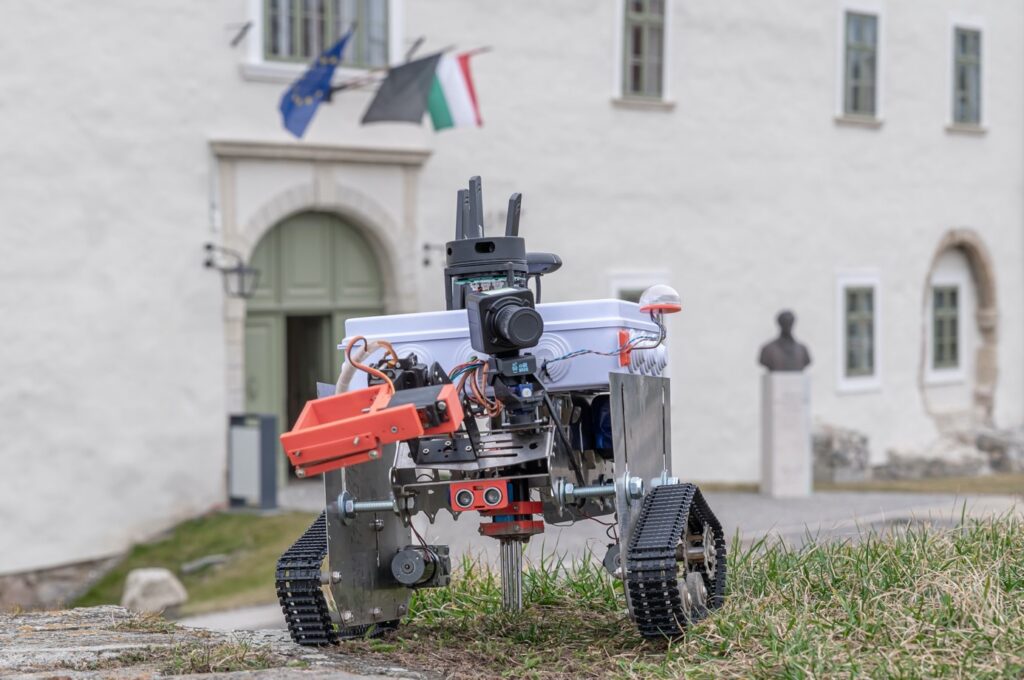A small robot with artificial intelligence, developed by the research group of the Albert Kázmér Faculty of Mosonmagyaróvár at Széchenyi István University, has recently been granted a patent. The autonomously controlled device is capable of detecting various parameters of its environment and using the collected data to perform cloud storage. The unique device addresses a market need and aims, among other things, to improve precision crop production.
The research of the Department of Biological Systems and Precision Technology at the Albert Kázmér Faculty of Mosonmagyaróvár has resulted in a field data collection robot that can perform a variety of tasks with the help of artificial intelligence.
The device, which is now a prototype, was developed as an enhancement of a robot platform from the Far East. The device has been equipped with more powerful hardware and software, as well as special sensor units that allow it to determine various parameters of its environment, such as ambient air temperature and humidity. It is also equipped with a sensor for measuring solar radiation and a soil probe that collects information on soil pH, conductivity and potassium supply, among other things. This data is stored in its memory via cloud storage and can be easily integrated into precision agriculture technology.

Members of the research team, Dr. Gergely Teschner, Dr. Bálint Ambrus and Dr. Éva Anikó Nyéki with the field robot (Photo: András Adorján)
„The robot is also fitted with a camera that informs the operator of its position and can use artificial intelligence to analyse and classify the images it collects. In the experimental area, we were able to detect parts of the tomato: the device detected leaf lesions, counted the yield and estimated the yield. In addition, we equipped it with a laser distance measurement module, which is used in navigation, so it can guide itself, orient itself between the rows of the plant and plan a route,” said Dr. Bálint Ambrus, senior lecturer and lead developer of the robot.
The researchers started using the device last year, testing it in a greenhouse and in the field in tomato plant culture, with the potential to extend it to other crops in the future.
„The creation of the robot was inspired by Bálint Ambrus’ PhD thesis and we are proud that it has become a protected model. Our development is also important because the European Union has set a 2030 target for emission and pesticide reduction in agriculture, to which monitoring robots contribute by predicting how to reduce such interventions. They can detect things that are not visible to the naked eye and provide rapid access to large amounts of data that can help optimize crop technology on large farms.”– underlined Dr. Éva Anikó Nyéki, Associate Professor and head of the research group.
In addition to Dr. Bálint Ambrus and Dr. Anikó Éva Nyéki, Prof. Dr. Miklós Neményi, Professor Emeritus of the Department of Biological Systems and Precision Technology, Prof. Dr. Attila Kovács, Head of the Department and Dr. Gergely Teschner, Senior lecturer, also participated in the research.

The field robot, which is equipped with GPS and a camera, weighs just under six kilograms and is fully electric, making it an excellent fit for precision agriculture (Photo: András Adorján)
The device also addresses the manpower shortage: only one operator can operate several of these devices at the same time.
„The use of our robot goes beyond agriculture: because it is small and cheap to operate, it can be used effectively in other sectors. Thanks to its artificial intelligence, it can be easily modified by programming to detect colours and shapes that allow it to be used for more than just crop production.”- added Dr Aniko Nyéki.
The mission of the Centre for Higher Education and Industrial Cooperation (CEEC) is to promote the commercialisation of intellectual works generated at the Széchenyi University. An important component of this is the examination of the protectability of industrial property rights: the protection of the utility model – granted to the robot developed in Mosonmagyaróvár – is one possible way of legally protecting inventions.
„Compared to the patent procedure, the procedure for the utility model is simpler and faster. When developing an IP strategy for intellectual property, we work with patent attorneys to take into account a number of considerations and always aim to find a form of protection that is commercially viable and beneficial to inventors. Thus, in addition to patents, utility model applications also play a prominent role in the university’s performance indicators,” said Dorottya Kathi, FIEK’s technical officer.
„Following the recently accepted patent of our university, we are proud of the new development that has been granted industrial property protection, which reflects not only the exceptional activity of our researchers in Mosonmagyaróvár, but also the outstanding quality of their work.”– underlined Bálint Szüle, FIEK’s Business Development Manager.






